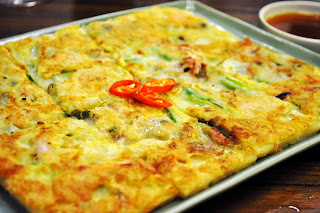Craving some fast facts?
|
The year Tsukiji opened
|
|
|
The highest price ever
paid (in USD) for a tuna sold at the tuna auction [The fish weighed nearly 500lbs giving it a price north of $3,200/lb]
|
|
|
The number of pounds of
seafood and fish pass that through Tsukiji each day!
|
|
|
The approximate amount
of money in USD that exchanges hands each day
|
|
|
Approximate square footage floor
space of the market
|
|
To put the size of this market in perspective: The floor area at Tsukiji is larger than the following: |
||
Heinz Field
|
1.49 million sq. feet
(the footprint of the entire structure)
|
|
All of the rentable space
in the Empire State Building
|
~2.25 million sq. feet
|
|
Relocating Tsukiji
The End of an Era
Owing to these and other issues, there has been talk of relocating Tsukiji for decades. The current proposal for relocating the iconic site, which was put forth in 2001, has met with significant opposition, troubling obstacles and extended setbacks since that time. Some opposition voices have objected to relocating the iconic operation on principle and expressed concern that the new, modern and sanitized operation would not have the same tourist appeal. There has also been significant criticism of redevelopment plans for the site as luxury high-rise condos, a plan which now seems to be on hold because the site is being proposed as a tourist hub for the 2020 Olympics, which Tokyo will host. Perhaps most troubling of the issues facing the relocation is the discovery that the soil at the new site (which formerly housed a gas refinery) is contaminated with well beyond acceptable levels of cyanide, arsenic and benzene. Not ideal. All of these issues put together have pushed back the estimated relocation date from 2012 to 2014 to the present expectations of early 2016, but definitely sometime before the 2020 Olympics.
A little more on the pollution: The soil at the new site contained benzene, which is carcinogenic, at 43,000 times the permissible levels under Japanese environmental regulation and cyanide at 800 times a level that is considered safe. (source) Clean up efforts are underway, but there is significant concern over whether they have been proven to be sufficient to ensure that the new market location will continue to enjoy the reputation of bringing in some of the best and freshest seafood in the world, and commanding the prices associated therewith. Read more here.
What I do know is that I am grateful to have visited Tsukiji at this historic, if totally chaotic, site. I am doubly grateful because I have actually seen it twice - I first visited Tsukiji in 2005, during my first trip to Japan (thanks, dad, for introducing me to this beautiful country).
Back to the Main Attraction
The Sites, Sounds and the Chaos
Where a museum is enhanced by a sense of stillness, contemplation and quiet, Tsukiji is a world-renowned commercial enterprise, in which all of its (non-tourist) guests are bustling, calculating and assertive. In Tsukiji, the prized edible exhibits are not intended to be long-admired. They are expertly yet efficiently assessed with cold calculation by knowing buyers. The day's catch are poked and prodded for indicators of their quality before they are selected and diced, filleted or bagged whole for the purchaser.
Where a museum thrives on cleanliness and order, Tsukiji's appeal is in its rawness and chaos. It's cobbled stone floors are haphazard and uneven, ensuring that each brimming container of aquatic life sits at an angle decidedly not parallel to the horizon. Intermittent pools of seawater and blood make polka dots on the narrow paths, resting wherever stones are missing or unevenly set and making it necessary for the squeamish and inappropriately shoe'd to play at least a few games of hopscotch.

Where a museum thrives on cleanliness and order, Tsukiji's appeal is in its rawness and chaos. It's cobbled stone floors are haphazard and uneven, ensuring that each brimming container of aquatic life sits at an angle decidedly not parallel to the horizon. Intermittent pools of seawater and blood make polka dots on the narrow paths, resting wherever stones are missing or unevenly set and making it necessary for the squeamish and inappropriately shoe'd to play at least a few games of hopscotch.
Yet, it was well before we entered the bizarre bazaar that is Tsukiji, that we got a healthy dose of its charmingly unwieldy bustle. To reach the inner market we had to pass through a gauntlet of dozens of forklifts and delivery trucks, not to mention the occasional bicyclist and the disoriented throngs of tourists, myself included. In hopes of capturing the scene, I took a brief video clip outside the wholesale area. In this clip, I am standing at the edge of one intersection (near what would be a curb if there were actually a sidewalk). You can see in the first seconds of the clip a near collision between two forklifts blinded to each other by a delivery truck inching out to make a left-hand turn.
Keep in mind also that I took this video holding my iPhone just at my chest. That forklift nearly rolled over my toes!
Once inside, Vince was treated to and I was terrified by an incredibly diverse array of sea creatures for sale. I tried to enjoy the spectacle without screwing up my face in fear, but the aisles between rows of vendors are so narrow that two people cannot pass each other without making accommodations for the other. So, each time I passed someone (a once every 30 second occurrence) I had to lean toward the edge of the aisle, over and around things like this:
 |
| which was totally alive and moving! |
and this:
and this:
This is direct from my nightmares to the real world.
It was occasionally cool but mostly just terrifying. Of course, even with my major fish phobia, it is obvious that the fish trade here is an art as much as it is commerce.
Andy's Shinhinamoto
Tsukiji's Bounty, Plated
Shortly after going to Tsukiji, we joined Vince's co-workers for dinner at Andy's Shinhinamoto, known by expats as Andy's Fish. The restaurant's slogan is "Straight from Tsukiji to you." It is run by a British guy who has developed an impressive reputation for his ability to pick the most choice fish from Tsukiji's many vendors. We ordered liberally tempura vegetables, crab, several types of fish, and Korean squid pancakes.
Building on my trend towards non-vegetarian exploration, I tried the Korean pancakes. For the record, it was not clear to me that they had squid in them when I started. I ate one and a half pancakes (each of which was about the size of a cookie) before that became clear to me. I finished the second one as assertively as I could. All I could think was... GOTCHA!
 |
| Courtesy of www.itsberyllicious.com. |


Amazing - I can just see you there! Love the blog and miss you guys!! - Margaret
ReplyDelete